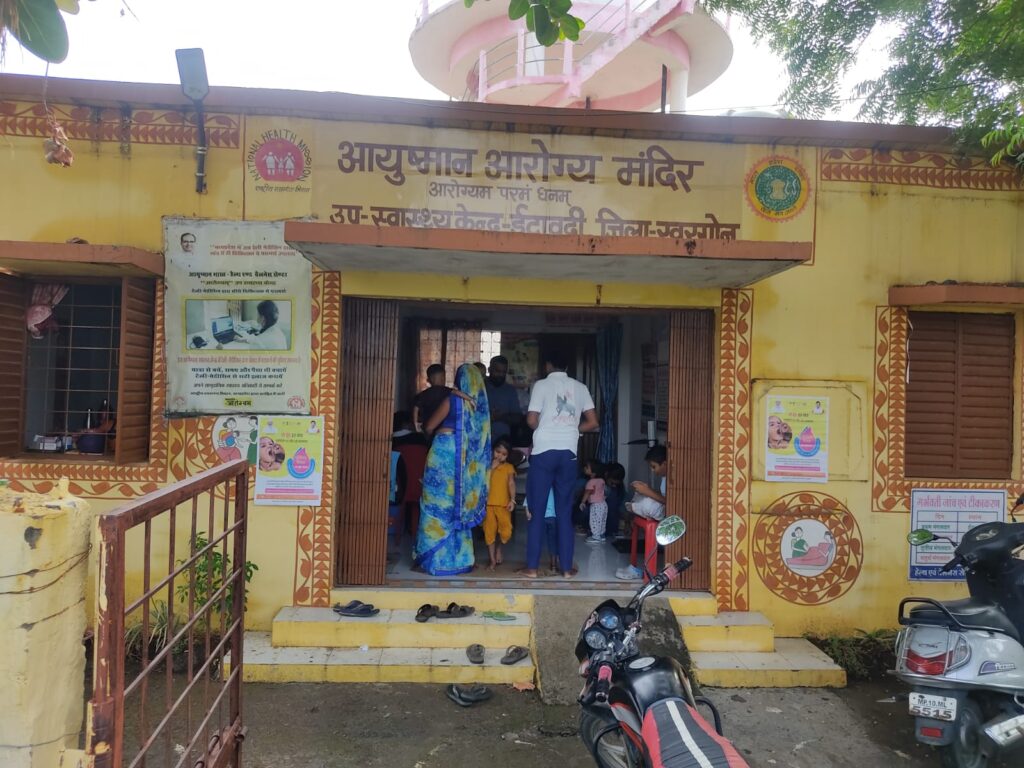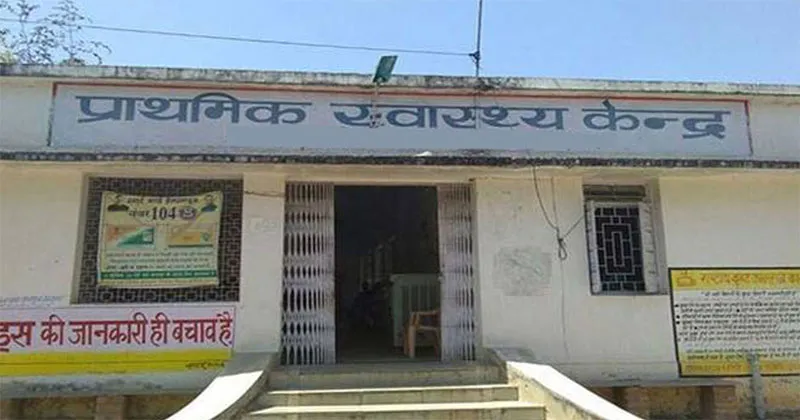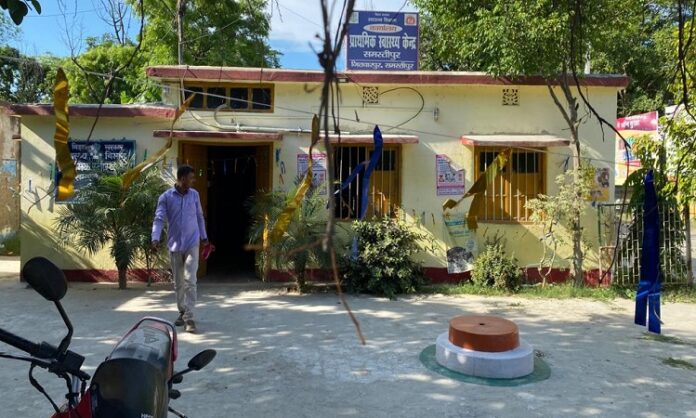Significant advancements in biomedical and biotechnological fields have paved the way for innovative treatments for complex diseases, promising immense improvements in healthcare outcomes. However, the benefits of these advancements often remain inaccessible to a vast majority of the population, particularly in countries like India, where socio-economic disparities and geographical divides persist.
In India, nearly 75% of the population resides in rural areas, facing significant barriers to accessing modern healthcare due to financial constraints and a lack of basic medical facilities. This divide is stark in Bihar, where 88% of the population lives in rural areas, relying heavily on primary healthcare infrastructure. Addressing the gaps in this infrastructure, particularly at the level of Health Sub-Centres (HSCs), is crucial for achieving equitable healthcare and socio-economic development.
Health Sub-Centres (HSCs) form the most peripheral and foundational tier of India’s healthcare system. Acting as the first point of contact between rural communities and the healthcare system, they play a critical role in preventive and basic curative care. These centers bridge the gap between rural populations and higher healthcare facilities from Primary Health Centres (PHCs) through Community Health Centres (CHCs) to District Hospitals.
Key Functions of Health Sub-Centres:
- Curative Healthcare: Treatment of minor ailments and management of common diseases.
- Preventive Healthcare: Community outreach, spreading health awareness, sanitation promotion and immunization.
- Maternal and Infant Care: Antenatal and postnatal services, safe delivery practices, and infant immunization.
- Health Surveillance: Data collection for public health planning and disease prevention.
- Implementation of central government schemes: Such as Janani Suraksha Yojana (JSY) and Universal Immunization Programme (UIP).
Genesis of Health Sub-Centres:
HSCs were introduced through the Minimum Needs Programme (MNP) in the 5th & 6th Five-Year Plan in 1980s to ensure basic healthcare services for underserved populations. As per Indian Public Health Standards (IPHS), one HSC is mandated for every 5,000 people in plains and every 3,000 in hilly or tribal areas. These standards continue to guide their establishment and operation.
With the launch of the National Rural Health Mission (NRHM) in 2005 and its successor, the National Health Mission (NHM) in 2013, HSCs became integral to reproductive, maternal, newborn, child, and adolescent health strategies. Decentralization through the 73rd Constitutional Amendment Act of 1992 further empowered local governance to enhance healthcare delivery through HSCs.
The Status of Health Sub-Centres in Bihar:
Despite their critical role, HSCs in Bihar face significant challenges that limit their effectiveness.
Infrastructure Deficit:
- Bihar requires approximately 19,000 HSCs for its rural population of 9.5 crore. However, only 8,858 are operational, leaving a shortfall of 53%.
- Over 70% of existing HSCs lack basic amenities such as toilets, electricity and clean drinking water, compromising service delivery and hygiene.
- Thus, only 2,657 Health Sub-Centres (HSCs) are effectively operational to serve the healthcare needs of Bihar’s 9.5 crore rural population.
- According to the Indian Public Health Standards (IPHS), this number is adequate to cater to the needs of only 1.32 crore people.
- This stark disparity indicates that approximately 8.18 crore rural residents remain disconnected from the state’s primary healthcare infrastructure, highlighting a critical gap in service delivery.

Staffing Challenges:
- Many HSCs function with only one or no Auxiliary Nurse Midwives (ANMs), against the norm of two ANMs and one Male Health Worker.
- Overburdened staff are often responsible for multiple HSCs, reducing the quality and efficiency of healthcare services.
Medical Supplies and Equipment:
- Shortages of essential drugs, sterilization tools and basic medical equipment are widespread.
- Poor supply chain management and corruption exacerbate these issues.
Accessibility Issues:
Poor road connectivity and inadequate transportation facilities make it difficult for rural populations to access HSCs, particularly in remote areas.
Recommendations for Strengthening Health Sub-Centres
Expand Infrastructure:
- Construct additional HSCs to meet population norms, prioritizing underserved areas.
- Upgrade existing facilities with permanent buildings, electricity, water supply and functional toilets.
Increase Staffing:
- Recruit and train more ANMs and Male Health Workers.
- Provide continuous professional skill development to enhance staff capabilities.
Ensure Adequate Supplies:
- Establish robust supply chain systems for timely delivery of essential drugs and equipment.
- Leverage technology for inventory management and monitoring.
Leverage Digital Technology:
- Implement telemedicine services to provide specialist consultations in remote areas.
- Use mobile health units to reach underserved communities.
Enhance Community Involvement:
- Strengthen collaboration with Panchayati Raj Institutions (PRIs) for better healthcare outreach and accountability.
- Build trust through consistent service delivery and community engagement.
Increase Budgetary Allocation:
- Allocate a higher percentage of Bihar’s GSDP to healthcare, ensuring adequate funding for infrastructure, staffing, and operational needs.

Impact on Rural Population – Healthcare, Employment and Women Empowerment:
Health Sub-Centres are the cornerstone of rural healthcare in Bihar. Addressing their deficiencies is essential for achieving equitable healthcare and improving overall health outcomes, including reduction in maternal and infant mortality rates.
Additionally, efficient primary healthcare at the community level will reduce the burden on secondary and tertiary care facilities, allowing them to focus on specialized treatments. This will improve overall healthcare efficiency in the state.
Bihar faces significant challenges in generating employment opportunities, primarily due to the state’s minimal industrialization and limited development of manufacturing and service sectors. Strengthening HSCs will not only improve healthcare outcomes for Bihar’s rural population but also create employment opportunities. Increased staffing requirements and infrastructure development will provide jobs for healthcare professionals and support staff, contributing to the state’s socio-economic growth.
When women are employed as Auxiliary Nurse Midwives (ANMs) in Health Sub-Centres (HSCs), it serves as a catalyst for gender empowerment at the grassroots level. These positions provide women with financial independence, social recognition and a platform to contribute meaningfully to their communities.
Moreover, ANMs act as agents of change for rural women. Their interactions with the local female population extend beyond healthcare services, fostering awareness about critical health, hygiene and social issues. Through these engagements, ANMs can inspire confidence andinstill a sense of empowerment among rural women, encouraging them to take active roles in improving their families’ well-being and advocating for their rights. Moreover, ANMs act as agents of change for rural women. Their interactions with the local female population extend beyond healthcare services, fostering awareness about critical health, hygiene and social issues. Through these engagements, ANMs can inspire confidence and instill a sense of empowerment among rural women, encouraging them to take active roles in improving their families’ well-being and advocating for their rights.
By bridging the gap between healthcare and community welfare, ANMs have the potential to drive transformative changes, not just in health outcomes but also in the social and cultural fabric of rural societies. Their presence underscores the vital role of women in shaping healthie and more equitable communitiesAs Bihar approaches the 2025 assembly elections, prioritizing healthcare, particularly the improvement of Health Sub-Centres, should become a key poll agenda. Empowering these institutions will not only strengthen the state’s healthcare system but also pave the way for a healthier, more prosperous Bihar.
As Bihar approaches the 2025 assembly elections, prioritizing healthcare, particularly the improvement of Health Sub-Centres, should become a key poll agenda. Empowering these institutions will not only strengthen the state’s healthcare system but also pave the way for a healthier, more prosperous Bihar
